Chris Ashton examines domestic ducks - how history shapes the present

Dibblers, dabblers, perchers and divers—ducks come in a huge variety of shapes and sizes. Wild waterfowl are some of the most colourful birds in the world, and have attracted the attention of humans for centuries. Domesticated, reared on the farm, kept in wildfowl reserves and collections, photographed at home and in the wild—these birds hold a fascination for humans which spans cultures word-wide. Yet the duck most of us end up with is, as you might have guessed, basically the mallard. Unlike many of the wild species, mallards can be persuaded to increase their egg production up the astounding performance of the Khaki Campbell of over 300 eggs per year.
Most people have heard of the Rouen and the Aylesbury, plus the popular Indian Runner and Call duck. These breeds have all evolved because of human selection from the basic mallard stock. In some cases this evolution has taken place over centuries and is undocumented. In more recent times, new breeds such as the Abacot Ranger have arrived with a splash, and much more is known about how they were produced.
The Muscovy is regarded as a domesticated duck as well, but it is an entirely different species from the mallard derivatives. For that reason, the Muscovy (Cairina moschata) is treated separately from the other breeds of domesticated ducks which are all the same species—Anas p. playrhychos.
When were ducks domesticated?
Diese Geschichte stammt aus der July - August 2017-Ausgabe von Practical Poultry.
Starten Sie Ihre 7-tägige kostenlose Testversion von Magzter GOLD, um auf Tausende kuratierte Premium-Storys sowie über 8.000 Zeitschriften und Zeitungen zuzugreifen.
Bereits Abonnent ? Anmelden
Diese Geschichte stammt aus der July - August 2017-Ausgabe von Practical Poultry.
Starten Sie Ihre 7-tägige kostenlose Testversion von Magzter GOLD, um auf Tausende kuratierte Premium-Storys sowie über 8.000 Zeitschriften und Zeitungen zuzugreifen.
Bereits Abonnent? Anmelden
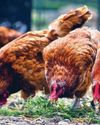
Growing food for Chickens
Mary Larham explores some crops to grow on your holding…
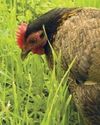
Poultry in the garden – the truth!
Jo-Jane Buxton shares her experiences
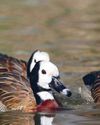
The British Waterfowl Association
Which came first, the goose or the egg?
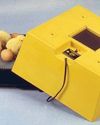
WHY FIT A FAN IN AN INCUBATOR?
Brinsea Products, the Incubation Specialists explain the difference between still air and forced draught
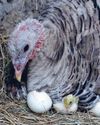
Incubating turkey eggs
Janice Houghton-Wallace looks at broody turkeys and artificial incubation
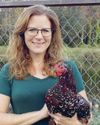
Chicken nesting box herbs
Diana Clauss owns The Blue Feather Farm, in St Cloud, Florida, home to chickens, ducks, goats, and Anatolian Shepherd dogs.
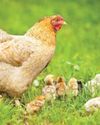
Incubate in January?
Jessica Wombwell says plan the breeding
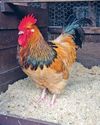
Andy's DIARY
Andy emphases the importance of keeping out damp and wet but allowing ventilation even in cold weather

Feeding for Breeding
It may be winter, but as Joanna Palmer, nutritionist for Smallholder Range explains, now’s the time to get your flock in tiptop shape and plan ahead for a successful breeding season next spring.
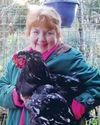
A chick named Cuckoo raised by a duck!
Chris Hammacott and her husband live on a small croft in the Outer Hebrides, they keep a ‘no kill’ flock or rare and rescue sheep which they use to spin and weave rugs. They also share the 8 acres with hens, ducks, cats and 9 rescue pugs.